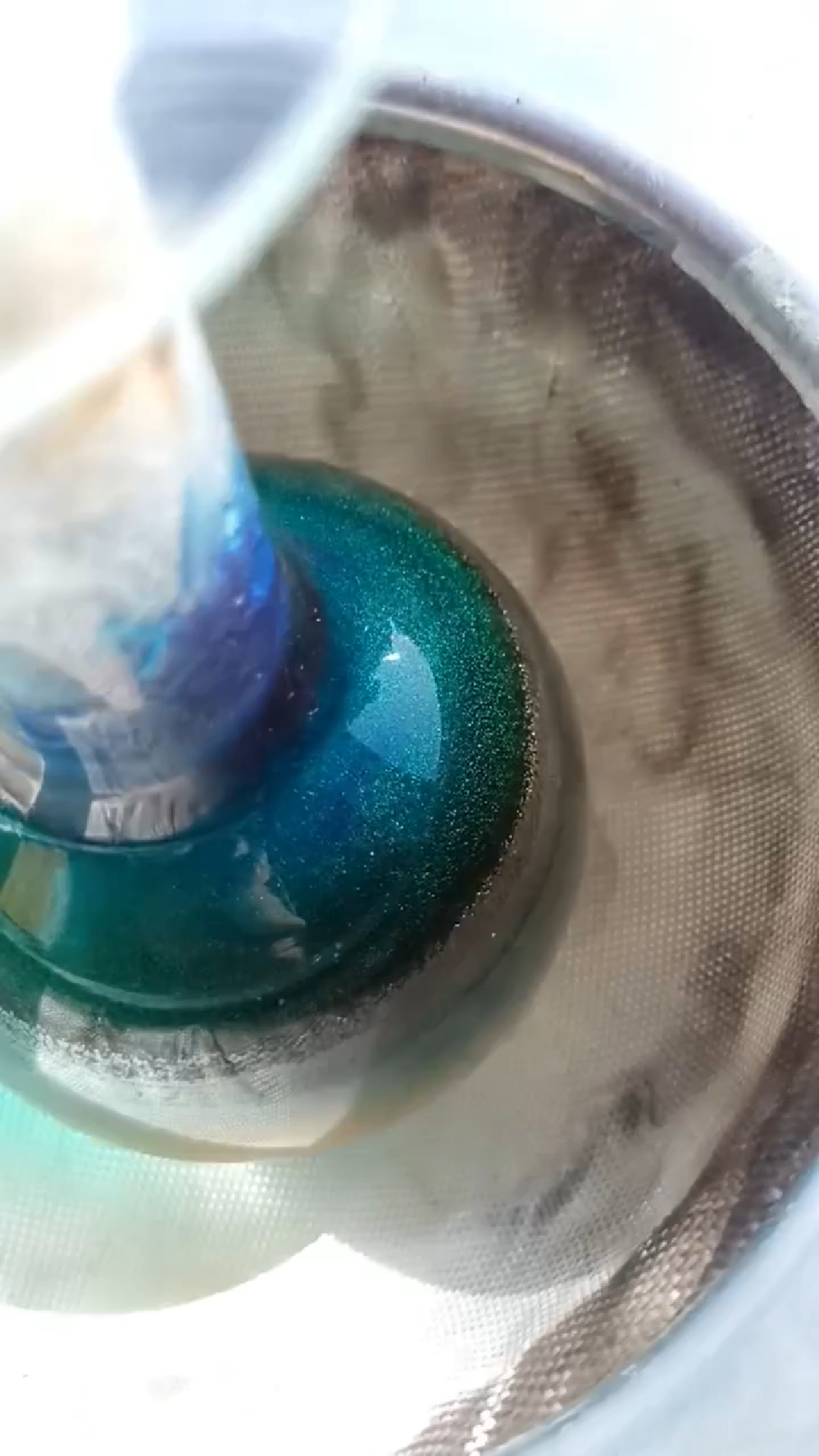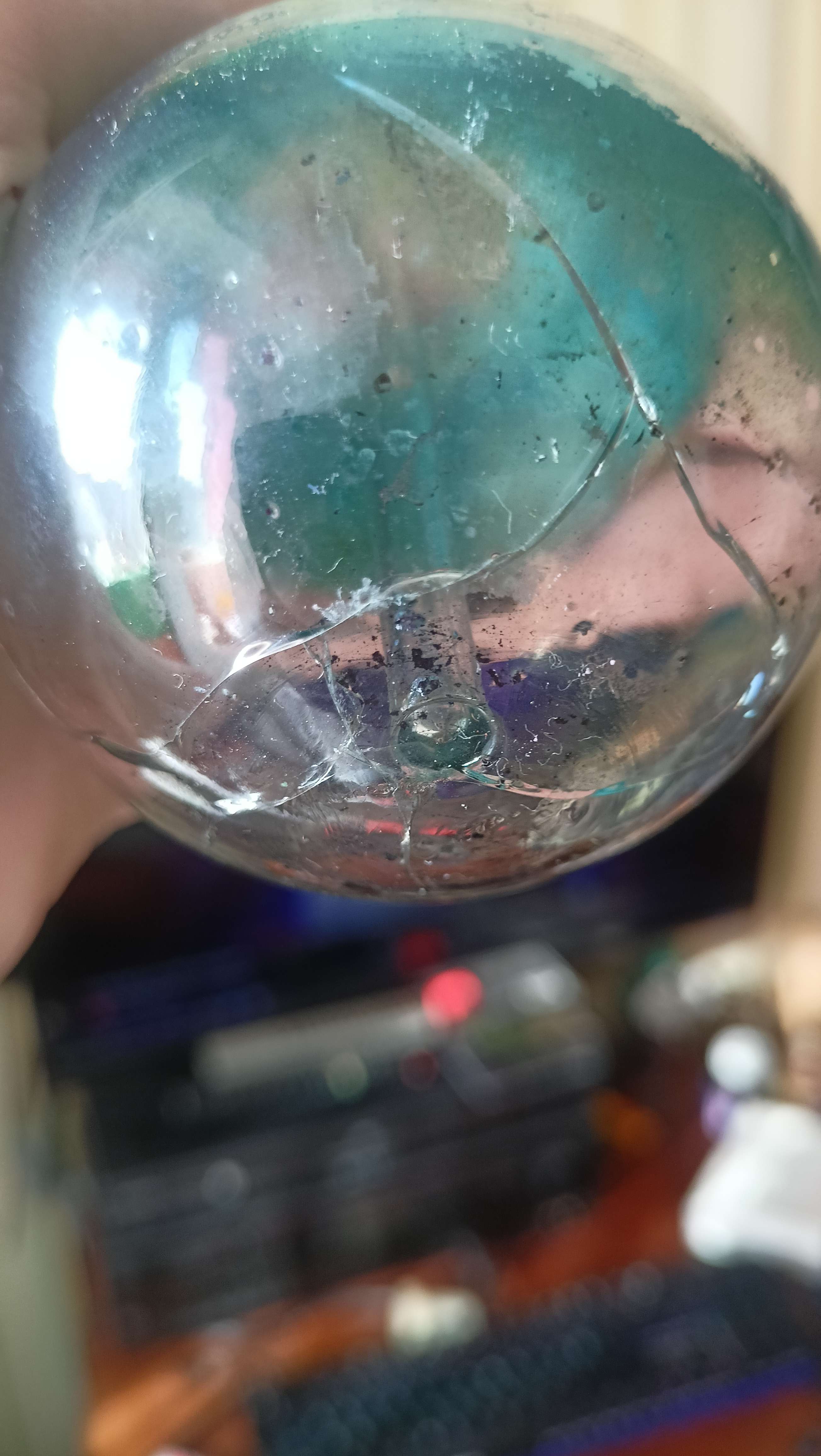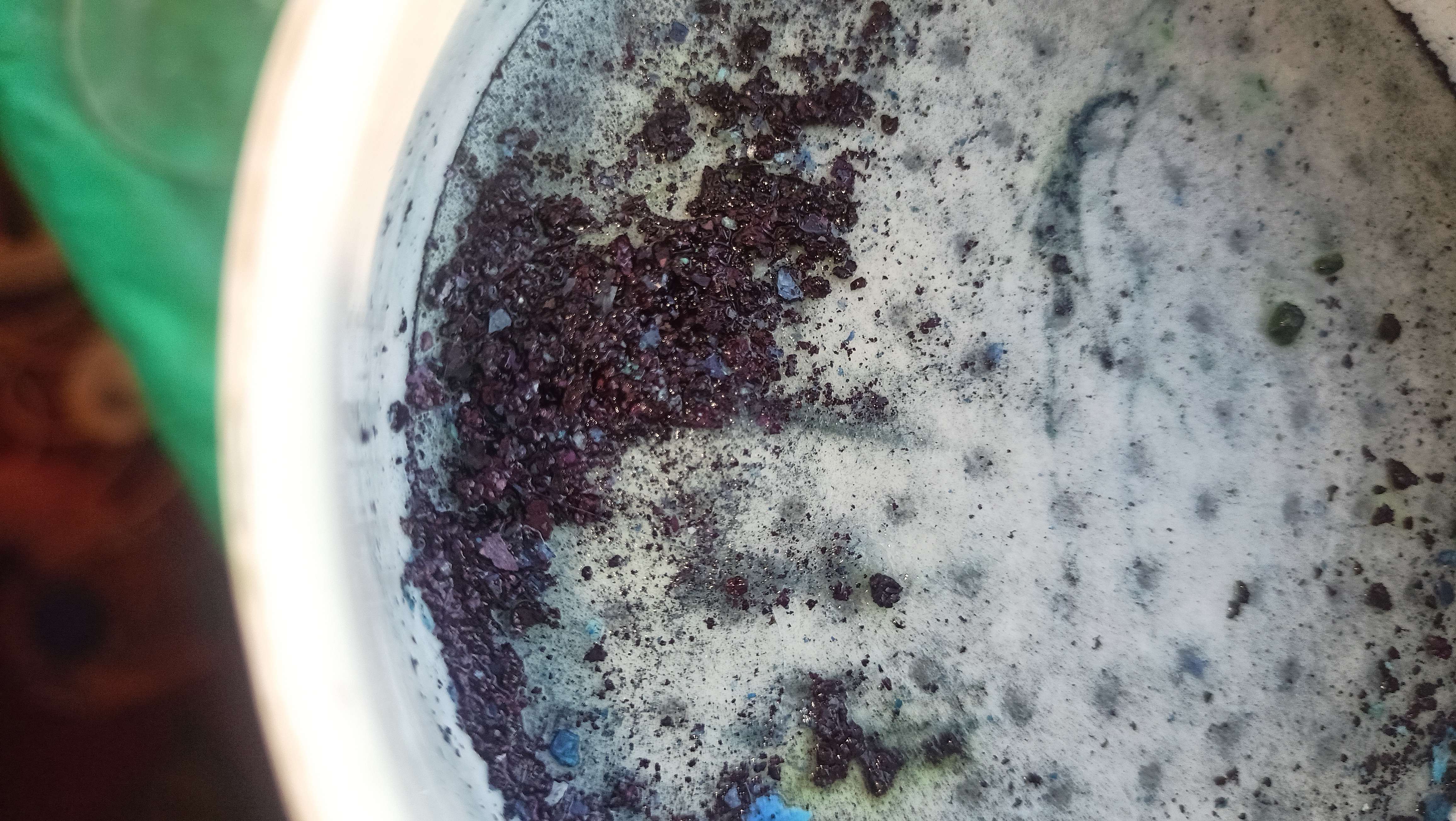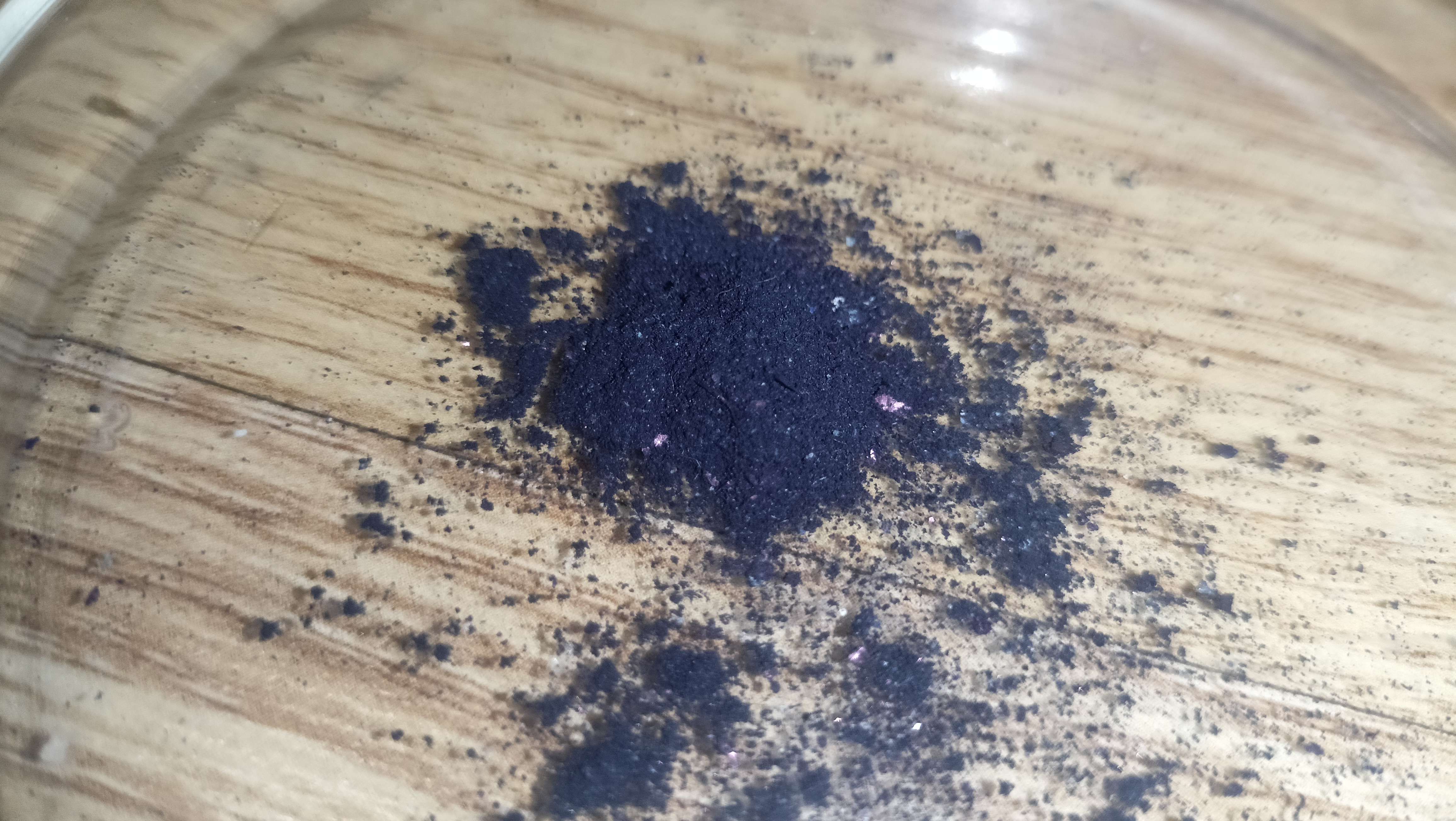Copper Phthalocyanine is something I’ve been procrastinating on for 2 years at this point, mostly because of a lack of equipment, reagents or my hatred of melting stuff together. After it being an eyesore in my to-do list for too long, I’ve decided to finally tackle it. Some things went wrong, some went surprisingly well, and I did end up recovering some product in the end.
Reagents
Most preparations of it call for Ammonium Molybdate as a catalyst, but that is pretty inaccessible for me and nobody stocks it locally, so I replaced it with a n equivalent amount of Boric Acid, which probably lowered my yields.
Also, my phthalimide is probably of lower quality than desirable, as I made it in 20 minutes on a gas stove 2 years ago and never recrystallised it.
Preparation
(This procedure is based on a video by Sciencemadness forum member/admin Texium)
The following amounts of reagents were weighed out and ground in a mortar and pestle:
- 0.027 mol urea (1.62 grams)
- 0.007 mol CuCl2 (1.16 grams)
- 0.00002 mol boric acid (0.001 grams) (just a few specks, really)
- 0.027 mol phthalimide (4 grams)
The resulting powder was separated into batches for experimentation, as I wanted to try different setups for preparing it.
Failed Attempts
The two failed attempts I’ve had making it involved heating it in a crucible over a gas flame or on a hotplate. However, gas flames are too hot for this, and I did not have a lid for my tiny crucible, so all the reagents just ended up sublimating out and filling the room with white smoke instead of reacting together to form the dye. Some amount of the phthalocyanine was formed, but it was negligible so all the resulting powders were discarded.
Successful Attempts (loss and gain are the same)
For the third and fourth attempt, a “sacrificial” (not really) round bottom flask was prepared. The flask was charged with 1/4th of the powder and set to max heat in a heating mantle. The neck of the flask was covered with a watch glass, to prevent sublimation of the volatile starting material.

After a while of melting and boiling, the reagents inside solidify to one solid blue mass, and some blue stuff (possibly the end product) sublimates out.

Now, my impatience took hold, and I decided to wash the solid and break it apart. Some amount of distilled water was added to the hot flask, which resulted in it cracking along the bottom (oops). The solid was broken apart with a glass rod and transferred to a beaker for the washing steps.

On my fourth attempt, another round bottom flask was used, this time without any losses of glassware, because as it turns out, the dye can easily be cleaned out with room temperature sulfuric acid and some elbow grease.
The resulting solid was put in a buchner funnel with filter paper (!), washed with dilute sodium hydroxide, dilute HCl and water, to remove all the soluble impurities, resulting in a shiny dark blue powder mostly free of green stains.

The solid was then transferred to a smaller mortar and ground.
The resulting yield was miserable, however I was just happy that it worked with all the tweaks and mishaps I’ve made.
